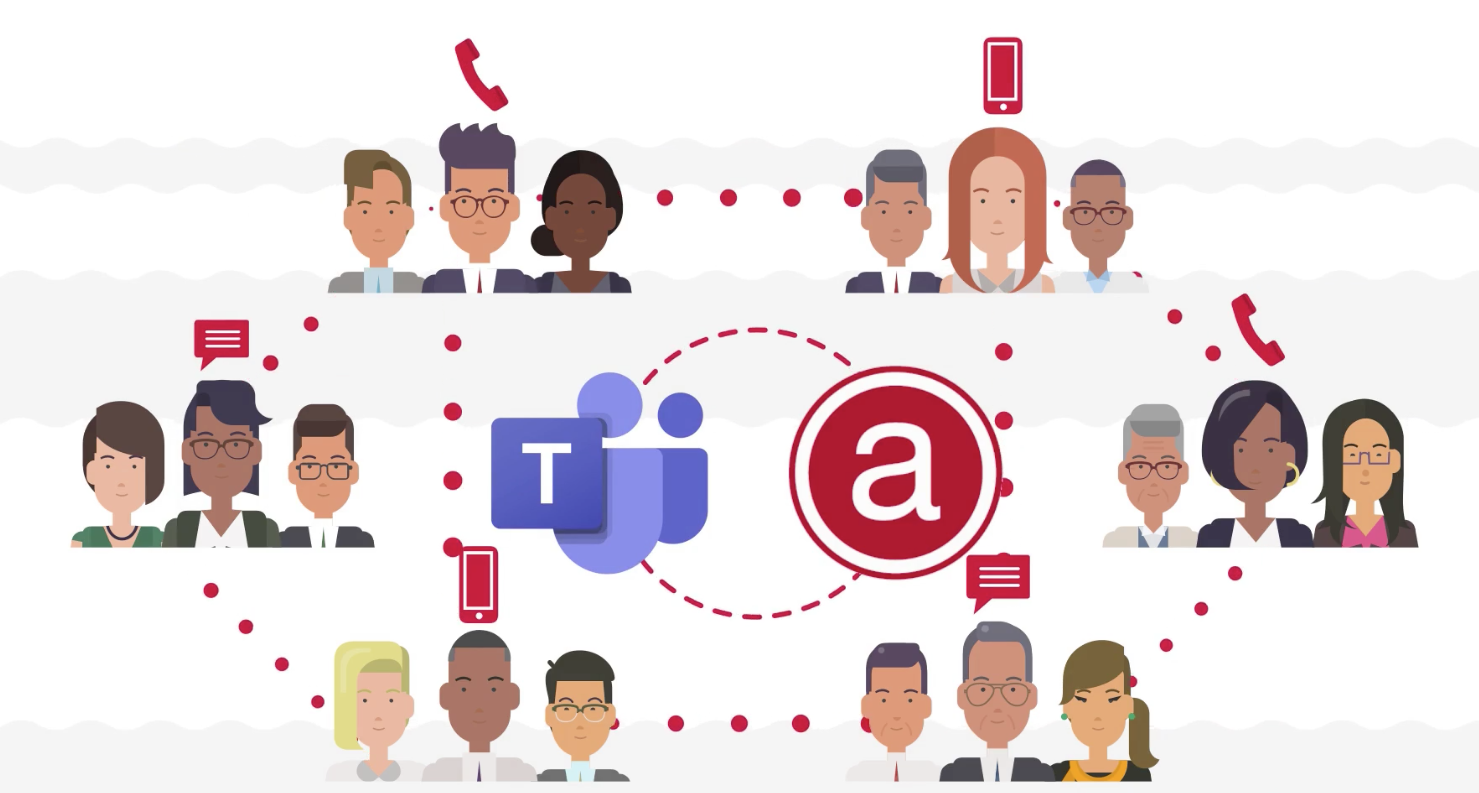More about Microsoft Teams Calling

The Internet has revolutionized and brought fundamental change to many industries and ways of doing business. From the early days when Amazon only sold books online and teenagers downloaded music using Napster to today's multiple choices for cloud platforms, the only constants have been rapid change and disintermediation. Currently, advanced cloud telephony and innovative communication tools are a manifestation of both of these concepts. Organizations both large and small, have started to take advantage of tangible business value from collaboration apps like Microsoft Teams and equipping Teams users with business telephony, changing the phone handset business and introducing a new way of doing business. Microsoft Teams is fast becoming a clear choice for those with the Microsoft Office productivity suite as their softphone and main business communication tool, both internally and with vendors, customers and prospects.
Microsoft has long cornered the business market with their Microsoft Office software for use of frontline workers and then Microsoft Server for running the back office systems. Looking to extend their workplace dominance, Microsoft has created it’s own Phone System which provides cloud PBX capabilities and encourages the use of Microsoft Teams for users to make and receive calls, access voicemail, and transfer calls. Business can connect Microsoft Teams to the Public Switched Telephone Network (PSTN) using a Microsoft Calling Plan or via Direct Routing.
Microsoft Calling Plans are offered in multiple countries, so this isn’t just a domestic effort at taking over from traditional phone companies and phone handset vendors. Their calling plans are predicated on a model like traditional mobile phone contracts where you commit to domestic and international minutes. Though this business model has enjoyed a lot of initial success and incredible growth, for business there are a handful of drawbacks. While using Microsoft Teams as a softphone makes a lot of sense, depending on Microsoft for the phone service itself, too, may not be a desirable change.
Keeping your phone number is now a fundamental “right” for any business. One of the biggest problems I see with using Microsoft is that you need to port your company’s phone numbers to Microsoft, making them your phone service provider. Number porting can be very complicated (ask our provisioning manager Brant Zeigenfuss sometime!), depending on how your carrier regulates calling services. Porting methods include full-port, partial port, inter-tenant port and project port. Make sure you understand which one best fits your business needs to get the most value from your Microsoft calling plan.
As is typical of a big company, it’s easier to run things when you have limited choices and fit your customers into one of YOUR boxes. Per-minute calling plans don't exist with Microsoft. However, monthly subscription plans are available for users these ways (currently):
- Domestic only for in-country calls (120/240/3000 domestic minute US plans)
- Domestic and international, for in-country and international calls (600 international calling minutes)
- Additionally, monthly plans are purchased using credit cards, making it both costly and unsuitable for many businesses.
This results in little flexibility and makes choosing a smaller, more nimble CLEC such as Atlantech Online as a smarter choice. Our calling plans offer unlimited local and domestic long distance calling. With Microsoft, contracts include bundled minutes but unused minutes don't get carried over to the next month. Employees exceeding monthly allocations can utilize the remaining minutes of other employees on the same plan. Remember, a per-minute overage is assessed and charged, so costs can add up quickly. This then results in billing complexities which can be further complicated if your company is making international and accepting toll-free inbound calls, which are more complex to track. Some organizations require individual teams, offices or regions to pay for their international calls. Your domestic or international plan is used upon reaching either the local or international minute total, whichever is first, raising your bill.
When I’m talking to prospects considering Microsoft Calling Plans, what I’m hearing is a lot of confusion about licensing. Microsoft appears to require separate licenses to enable audio conference calls. Conference calls that allow voice-only attendees to dial their local phone number are then billed in 60-second increments, which becomes expensive when call bundles get consumed before the end of the month. The confusion can be avoided if using Atlantech Online Microsoft Teams Calling.
That’s why many are starting to rely on Atlantech Online to handle the Direct Routing and avoid making Microsoft their phone company. Atlantech Online Microsoft Teams Calling is a direct routing service that removes administrative complexities, allowing users to make and receive PSTN calls from Microsoft Teams on their desktop or smartphone. It complements the Teams experience through better call quality, analytics, number management and porting.
Benefit to business is quick deployment, and also includes native contact center support, call recording, comprehensive analytics, and support for third-party apps. We can even deliver a global private mobile phone network and devices.
Atlantech Online Microsoft Teams Calling can give your company all the benefits of a global enterprise communication solution, saving you time and money. It is another example of the revolutionary change that Internet technology has brought to business.
Book a meeting with us today to learn more!


